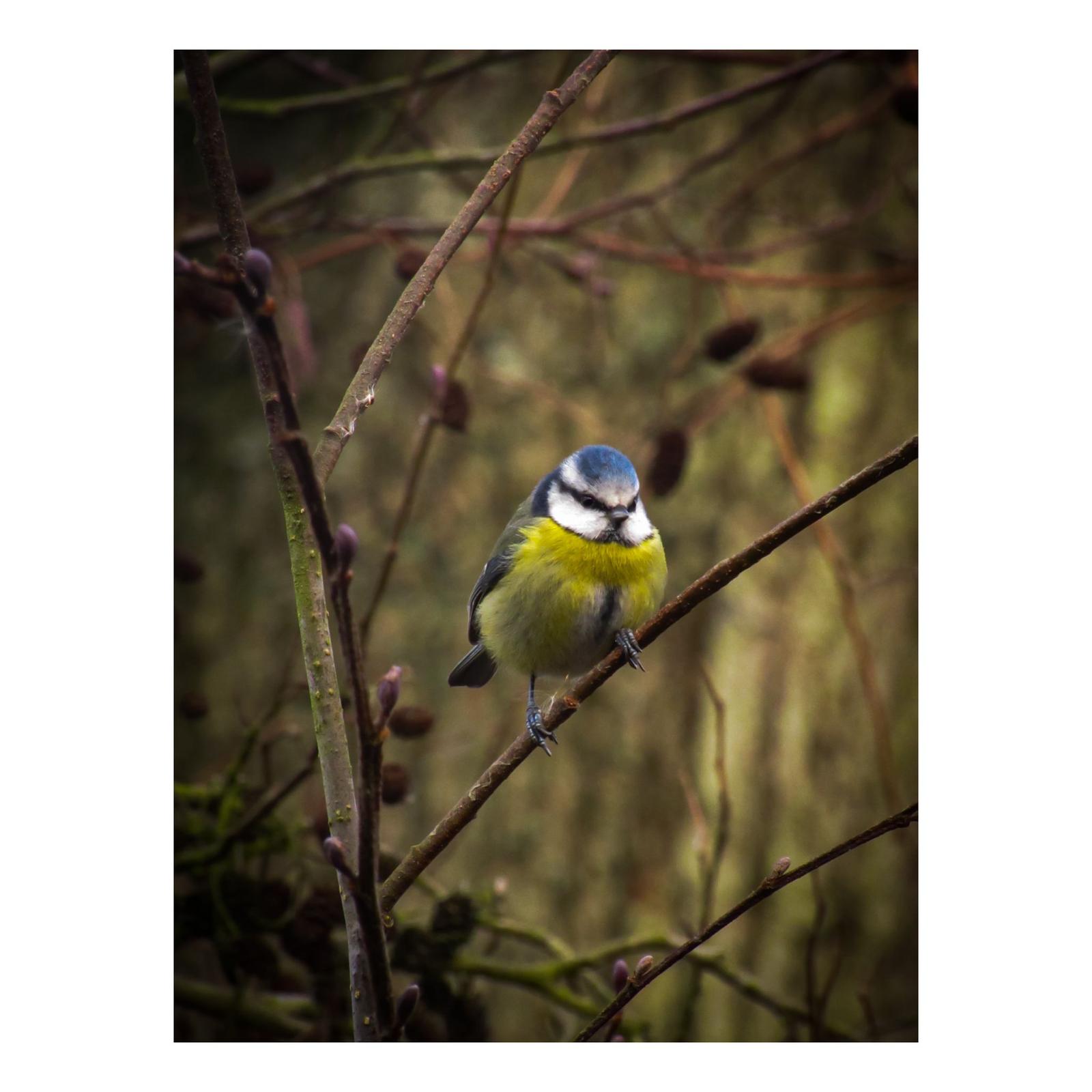Will Glow in the Dark Trees Replace Streetlamps? (Photo by Luca Calderone on Unsplash)
Scientists are thinking of genetically engineering glow in the dark trees for replacement of streetlamps. (1) This would save lots of energy, as less fossil fuels will need to be burned to produce energy for the streetlamps. (2) However, how will these trees affect wildlife? Will their glow be strong enough to efficiently replace streetlamps? How much will they cost to make? Will their glow last their whole lifetime?
How are glow in the dark trees made?
There are multiple ways to produce glow in the dark trees. The first glow in the dark tree was created in the 1980s by inserting a gene for luciferase with a promoter and then adding luciferin into a tobacco plant. (4) Luciferase is an enzyme that produces light when oxidized. The gene for this enzyme can come from insect fireflies, luminous marine and terrestrial microorganisms. (5) In this case the scientists took the gene from a firefly. (4) The scientists added luciferin, as it is luciferin that is oxidized by the 61-KDa enzyme from the luciferase gene. (6) The promoter helps with producing the protein as it is the region of DNA where protein binds to start the transcription of the gene. (7)
A company called Bioglow also developed a way by using the DNA from luminescent marine bacteria and inserting it into the chloroplast genome of a plant. This plant is a house plant, which has been engineered to produce a slight glow and its life expectancy is two to three months. (3)
A group in California also managed to create a glow in the dark tree. The species they chose is called Arabidopsis thaliana (a flowering plant) and the gene they picked was from the marine bacteria Vibrio fischeri. To find the gene, they used Genome Compiler and then adjusted the gene sequence so it could work in plants instead of bacteria. Then they synthesized the DNA and sent it off to a company for it to be made. Once the DNA arrived, they inserted it into bacteria called agrobacterium. (4) Agrobacterium is the only known example of trans-kingdom so far. It can transfer its genetic material into eukaryotic cells. (11) In this case it inserts the DNA into the female gametes of the plant. To get the DNA into the plant a gene gun is used, this fires DNA at high velocities into the cells of the plant. Now that the DNA has successfully entered the organism it will start to produce the proteins from the gene’s code and so start to express the gene. (4) This is how the group in California produced a flowering plant that glows in the dark.
Do the benefits of Glow in the dark trees outweigh the disadvantages?
Although glow in the dark trees would save us lots of energy on streetlamps, it has been considered a very complex process to convert plants into glowing plants. We have already spent lots of money on the process and have not successfully produced a plant that glows in the dark with a good amount of light or for long enough. The benefit for glow in the dark trees may not outweigh the disruption they would have on birds. Birds would nest in these glowing trees, which may disrupt their internal clocks. (8) If we were to have glow in the dark trees, there is a possibility that the population of birds would decrease due to the change in their habitat, and we cannot afford to lose birds are as they are pollinators.
It is estimated that 15 billion trees are cut down every year. (9) From December 2020 there were over 326 million streetlamps in the world (10), which could potentially be replaced by bioluminescent trees. This would increase the number of trees in the world and so increase biodiversity and reduce carbon dioxide levels. However, there is not enough research to say that glow in the dark trees wouldn’t affect other species in the environment. We could try and keep glow in the dark trees separate from other species by planting them in specific areas, although this would be difficult to control as their seeds would still spread and cause glow in the dark trees in unwanted places and so increase their population. A disadvantage of the trees growing in unwanted areas is that they could cross-contaminate with other species of trees and create mutant plants. (8)
Furthermore, it is difficult to say if glow in the dark trees could potentially replace streetlamps. Without a full understanding of the effect these trees could have on the habitats they would live in, we cannot confidently say that their advantages outweigh their disadvantages. The idea of bioluminescent trees sounds amazing, but there is not enough evidence to support their ability to work efficiently. Perhaps in the future, when there is plenty of research to determine the light intensity and life expectancy of the plant, the answer to this question will be clear. However, it doesn’t seem like streetlamps will be replaced by glow in the dark trees anytime soon.
Bibliography:
1 – Environment.co – Do Glow-in-the-Dark Trees Exist? By Rachel Lark (February 17 2023) https://environment.co/glow-in-the-dark-trees/#:~:text=Scientists%20have%20been%20experimenting%20with,of%20Chemical%20Engine9ering%20at%20MIT. [Accessed on 17/07/24]
2 – Richtopia – The Future potential of Glowing Trees (Climate and Security) By Derin Cag (December 17, 2022) https://richtopia.com/emerging-technologies/the-future-potential-of-glowing-trees-climate-security/#:~:text=1)%20Saving%20energy%3A,lighting%20for%20centuries%20to%20come. [Accessed on 17/07/24]
3 – DEZEEN – Worlds first glow-in-the-dark plant genetically engineered By Alyn Griffiths (13 January 2014) https://www.dezeen.com/2014/01/13/worlds-first-glow-in-the-dark-plant-genetically-engineered/#:~:text=Krichevsky%2C%20a%20specialist%20in%20microbiology,fireflies%20and%20other%20bioluminescent%20organisms. [Accessed on 17/07/24]
4 – Smithsonian – Creating a New Kind of Night Light: Glow-in-the-Dark Trees By Megan Gambino (July 10, 2013) https://www.smithsonianmag.com/innovation/creating-a-new-kind-of-night-light-glow-in-the-dark-trees-9600277/#:~:text=Evans%20and%20his%20colleagues%2C%20biologists,to%20fill%20many%20human%20needs [Accessed on 17/07/24]
5 – Science Direct – Luciferase https://www.sciencedirect.com/topics/medicine-and-dentistry/luciferase#:~:text=Luciferases%20are%20enzymes%20that%20produce,are%20also%20used%20as%20reporters. [Accessed on 17/07/24]
6 – National Institutes of Health – Luciferase assay By Stephen T Smale (2010 May) https://pubmed.ncbi.nlm.nih.gov/20439408/#:~:text=A%20commonly%20used%20reporter%20gene,by%20measuring%20the%20released%20light. [Accessed on 17/07/24]
7 – National Human Genome Research Institute – Home/About Genomics/Educational Resources/Talking Glossary of Genomic and Genetic Terms/Promotor By Julie Segre, Ph.D. (Updated: July 16,2024) https://www.genome.gov/genetics-glossary/Promoter#:~:text=A%20promoter%2C%20as%20related%20to,molecule%20(such%20as%20mRNA [Accessed on 17/07/24]
8 – THE WEEK – Glow-in-the-dark trees could someday replace city street lights – Home/Tech By Lana Bandoim (Published 17 August 2018) https://theweek.com/articles/763908/glowinthedark-trees-could-someday-replace-city-street-lights [Accessed on 17/07/24]
9 – The Nature Conservancy – Does Money Grow on Trees? Businesses Say Yes By Andrew Wu, Andrés Anchondo Ortega, Eriks Brolis, Sofia Faruqi (January 18, 2018) https://www.nature.org/en-us/what-we-do/our-insights/perspectives/does-money-grow-on-trees-businesses-say-yes/#:~:text=An%20estimated%2015%20billion%20trees,41%20million%20trees%20per%20day [Accessed on 17/07/24]
10 – Cities today – A quarter of streetlights could be smart by 2030 by Sarah Wray (01 December 2020) https://cities-today.com/a-quarter-of-streetlights-could-be-smart-by-2030/#:~:text=Globally%2C%20there%20are%20326%20million,by%20the%20end%20of%202029. [Accessed on 17/07/24]
11 – ScienceDirect.com – Agrobacterium – Agrobacterium-mediated Alien Gene transfer Biofabricates Designer Plants by Shweta Mehrotre, Vinod Goyal, in Genetically Modified Organisms in Food (2016) https://www.sciencedirect.com/topics/agricultural-and-biological-sciences/agrobacterium#:~:text=Agrobacterium%20has%20been%20referred%20to,plants%20for%20the%20introduction%20of [Accessed on 17/07/24]
Big Garden Birdwatch 2025
Winter can often seem quiet and lifeless, but — if the right attractions, food and water, are consistently left out — it is not difficult to attract a little bit of noise into your back garden! This year, the Big Garden Birdwatch¹ takes place on the 24th, 25th, and...




0 Comments